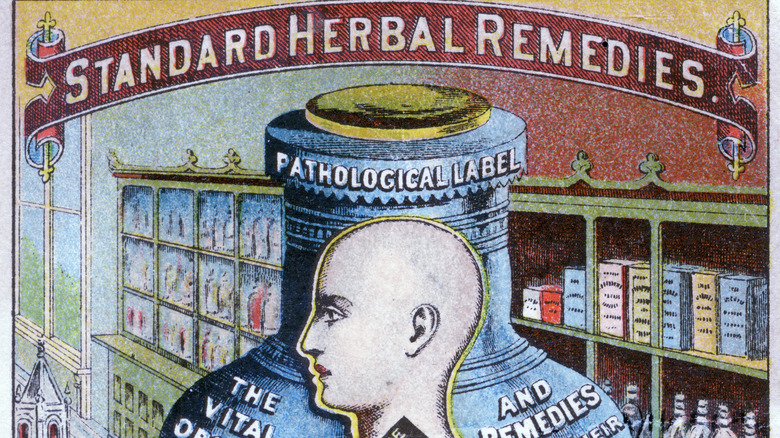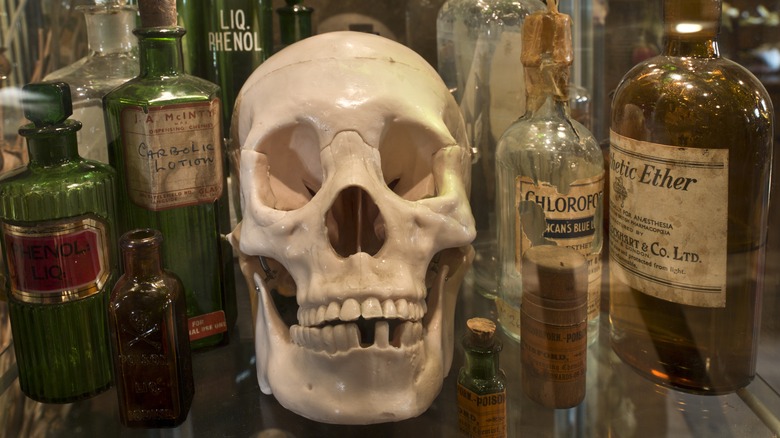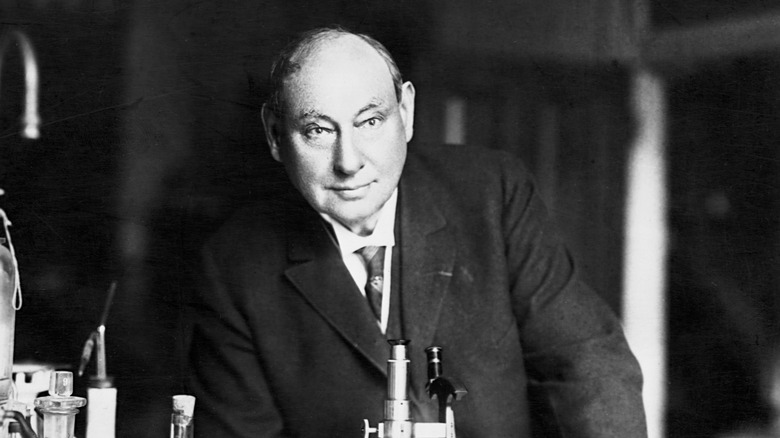The Disturbing Truth About Pharmacies In The 19th Century
In December 1896, a college student in Evanston, Illinois named Alice Corlett was feeling under the weather. She'd caught a cold and decided to try a patent medicine to help her get over it. Not long after she took a dose, she passed out, according to The Chicago Tribune. The family she was boarding with, unable to wake her, called a doctor who was barely able to save her life by giving her something to help stimulate her heart. Corlett was luckier than many.
In the 19th century, there was little to no regulation of the pharmacy industry in either the United States or England. The results were often deadly. An 1880 report in the British Medical Journal estimated there were 150,000 deaths annually from patent medicine, per The Humboldt Union. This was thanks to the array of sometimes deadly ingredients pharmacists used in their medicines, including morphine, cocaine, alcohol, arsenic, and mercury, according to The Pharmaceutical Century.
A cornucopia of dangerous ingredients
In the 19th century, pharmacists were free to produce their medicines with no governmental regulation to get in the way and similarly, could make spurious claims as to efficacy in their newspaper advertisements, per Smithsonian. They also didn't have to list the ingredients or amounts. And considering what was in them, they were smart not to. For example, one popular medicine, "Blue Mass" pills had mercury as its main ingredient. The recommended dosage was 100 times above what's considered a safe level, according to the National Park Service.
Another patent medicine that had arsenic as its primary ingredient took center stage in a murder case against a Norwich, Connecticut businessman accused of murdering his wife with poison. William B. Riddle claimed it was the patent medicine and not him to blame for his wife's death, according to The New York Times. Riddle may have gotten away with murdering his wife by blaming the product or he may have indeed been innocent, either way, he beat the murder charges, per The Semi-Weekly New Era.
The fight against regulation
The groundbreaking chemist, Harvey Washington Wiley, who worked for the U.S. Agriculture Department, spearheaded the fight for federal regulation over food and drugs, according to "The Poison Squad: One Chemist's Single-Minded Crusade for Food Safety at the Turn of the Twentieth Century." While Wiley was more focused on food and beverages, he also took on patent medicine. One of his chemists discovered that these medicines contained high levels of ethanol, in one case, Baker's Stomach Bitters was 85 proof, the equivalent of bourbon.
The pharmaceutical industry struck back claiming the federal government was attacking the manufacturer's "personal freedom" and would soon be regulating everything, including religion. The drug companies continued to have free reign until the beginning of the 20th century. In 1906, President Theodore Roosevelt signed the Pure Food and Drug Act into law, which banned the interstate traffic of adulterated or misbranded food and drugs, according to the U.S. Food and Drug Administration. England didn't get around to fully addressing the issue until 1931 when Parliament passed the Proprietary Medicines Bill regulating the patent medicine industry, according to the National Library of Medicine.


